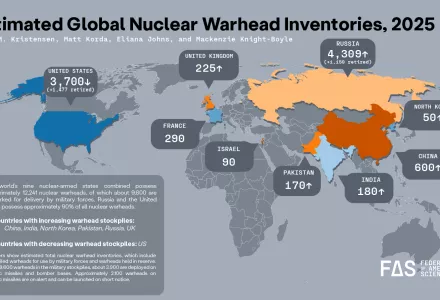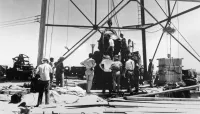In July 2025, as the world marked the 80th anniversary of the Trinity test, the first human detonation of a nuclear device, an extraordinary gathering took place in Chicago. Nobel Peace Laureates, scientists, and leading nuclear experts convened for the Nobel Laureate Assembly for the Prevention of Nuclear War. The declaration they issued at the end of their deliberations is both a moral appeal and a pragmatic roadmap. It deserves to be read not as a symbolic gesture but as a strategic framework for global risk reduction in a time of unprecedented instability.
The declaration opens with a sobering truth: “There is only one challenge that could end civilization in an afternoon.” It is a reminder that, while the world faces multiple cascading crises, climate change, geopolitical rivalry, authoritarian resurgence, AI disruption, only nuclear war offers the terrifying possibility of sudden, irreversible annihilation.
A World Tilting Toward Risk, Not Restraint
The global nuclear order today is in dangerous mutation. We are not witnessing the return of Cold War bipolarity, but the emergence of multi-node deterrence, strategic ambiguity, and nuclear signaling that defies traditional arms control logic.
In Europe, Russia’s war against Ukraine has eroded firebreaks between conventional and nuclear doctrine, resurrected talk of tactical nuclear use, and collapsed the last remaining arms control architecture between Washington and Moscow. In the Middle East, Israeli and U.S. strikes on Iran’s nuclear infrastructure and Tehran’s retaliatory posture have introduced a new theater of nuclear shadowboxing, one without the constraints of mutual clarity or Cold War-era hotline diplomacy.
Meanwhile, in South Asia, the May 2025 crisis between India and Pakistan demonstrated how multi-domain conflicts infused with cyber operations, AI-driven ISR, and space-based targeting, can escalate rapidly under the nuclear overhang. In such scenarios, perception becomes as destabilizing as capability.
This is the context in which the Nobel Laureate Declaration must be understood, not merely as a call for abolition, but as a roadmap for crisis prevention, nuclear risk reduction, doctrinal transparency, and restoring political imagination to arms control.
The Security Dilemma in the Age of AI and Entanglement
The declaration is not naïve about deterrence. It acknowledges that fear of nuclear war has historically preserved stability. But it asks: Can a global order built on fear be sustained indefinitely, especially in a world where deterrence is being destabilized not only by state behavior, but by emerging technologies?
Artificial intelligence, automated early-warning systems, and cyber infiltration of nuclear command-and-control (NC3) architectures are no longer theoretical risks. The declaration rightly calls for “enhanced human control and oversight,” lengthened decision timelines, and the institutionalization of the two-person rule for launch decisions. These recommendations are not utopian, they are pragmatic firebreaks in an age where machine error, cognitive overload, and compressed timelines threaten to hijack the human judgment nuclear deterrence depends on.
We are already entangled. Hypersonic missiles, dual-use platforms, and ISR-enabled precision create what scholars call “use-it-or-lose-it” instability. Crisis decision-making in such an environment is not linear, it is volatile, recursive, and often misinformed.
The Nobel Laureate Declaration recognizes this. It is not asking states to disarm overnight. It is urging them to acknowledge the interdependence of strategic offense and defense, to avoid space weaponization, and to rebuild bilateral and multilateral mechanisms for dialogue, transparency, and communication.
Reframing Responsibility and Agency
Most importantly, the declaration shifts the conversation away from state exceptionalism. It calls on scientists, scholars, civil society, and faith communities to exert moral and political pressure on leaders who have become hostage to inertia or domestic populism. This is an urgent reminder that nuclear risk reduction cannot be left to nuclear states alone, it must become a transnational civic responsibility.
As a scholar from South Asia, a region where strategic culture is often shaped as much by denial as by doctrine, this call resonates deeply. Pakistan, India, and China all operate in a tightly compressed deterrence triangle. The absence of arms control frameworks, coupled with political mistrust, raises the specter of misperception during any future crisis. The declaration’s emphasis on secure communications, doctrinal dialogue, and non-proliferation integrity is not abstract, it is survival logic for my region.
Conclusion: Strategic Humility in an Age of Overreach
In a moment where strategic bravado is cheap and restraint is seen as weakness, the Nobel Laureates offer a counter-ethic: strategic humility. They remind us of what Russell and Einstein once said: “Remember your humanity and forget the rest.”
The 80th year of the nuclear age need not be marked only by grim anniversaries or provocative missile tests. It can also be remembered as the moment when a group of thinkers, scientists, and leaders, freed from bureaucratic calculation, laid out a vision for a different path.
It is now up to us, scholars, policymakers, civil society, to ensure their declaration is not read once and shelved, but used as a living document to guide our collective choices in the years to come.
Our task is not to reduce risk to zero. Our task is to ensure we do not pretend the risks are not growing, fast.





